
|

|
|
Home Site Search Contact Us Subscribe
|
|
One-on-One: Architecture is an Endless Process for Learning: Interview with Fumihiko Maki The multi-award-winning architect talks about why he avoids using exposed concrete outside of Japan, why the Metabolist movement didn't quite catch on, and Yoshio Taniguchi's buildings: "He is our Mies van der Rohe." By Vladimir Belogolovsky April 5, 2018 Vladimir Belogolovsky: I know that you were aware of architecture from an early age because you grew up in a house designed by an architect. When did the idea of one day becoming an architect first occur to you?
Fumihiko Maki: Yes, I grew up in a house designed by my uncle, an architect, and I went to an elementary school designed by Yoshiro Taniguchi, the father of Yoshio Taniguchi. Of course, I didn’t know it then, but I remember that I was intrigued by the space and I felt that it was different from most other buildings. It was very enjoyable to be there. I spent my high school years during the Second World War and I was interested in building airplane models. But when the war ended, Japan was prohibited from doing anything that had any relation with aeronautical engineering. Since I was interested in making, building, and designing things, I thought that the closest thing to that would be architecture. And I was already exposed to the work of some of Japan’s Modernist architects, particularly their houses. That’s how it all started.
VB: Are you now as busy as ever? What are some of the projects that you are working on, and what is it that you are most concerned about at this stage of your career? FM: I just completed the Japanese Sword Museum here in Tokyo. The latest foreign projects, Shenzhen Sea World Culture and Arts Center in China and the Bihar Museum in India, were built last year. I am working on several large projects now, including a new City Hall for Yokohama, a gallery of modern art in Wiesbaden, and my third project with Aga Khan in London. My concerns, when designing architecture are basic – to deliver quality design and construction, to express my buildings’ unique locations, to address my clients’ briefs and programs, and to fit into given budgets. Well, here in Japan it is not so difficult to achieve good construction quality. But when you work abroad it is not that easy. For example, I try to avoid using exposed concrete outside of Japan. There is a high chance it will not be done well. Here in Japan, we enjoy a very high level of craftsmanship and rarely do we import any techniques that cannot be done right here.
VB: Years ago, you said, “I have no inspiration, just hard work.” You also said, “Architecture is not about invention, but about discovery.” Could you elaborate? What are the main intentions of your architecture?
FM: I think architecture is not like art. It must be used. So, if any, it is a kind of social art. For me architecture is an endless process for learning. I observe how people use our buildings and I try to incorporate those findings in the next project. So my architecture is done through accumulation of knowledge and experience of designing and building for many decades now. Testing ideas is important. From the beginning, we do many sketches and discuss ideas. Then we pick what we like and pursue those directions. And if we have a few options, I am the person who makes the final decision.
VB: You worked with Kenzo Tange. Could you talk about that experience?
FM: I worked for him for a short period of time, just for a few months. But I knew him well and went to his office often. I learned from him simply by observing his design process. His architecture was his own and none of the architects who worked for him and later became independent tried to imitate his work. Isozaki, Kurokawa, Taniguchi, myself, and many others – we all wanted to be ourselves. We all respected him, but we wanted to be different. Of course, there are architects who choose to imitate their masters, such as in the case of many followers of Wright, Mies, or Le Corbusier. Perhaps that was Tange’s lesson – the process itself was important, but there should be many ways to express architecture. That’s each architect’s own choice.
VB: Along with such architects as Isozaki, Kurokawa, and Kikutake, you were one of the founding members of the Metabolist movement, concerned with organic urban growth. Why do you think it didn’t quite take off with so few projects built?
FM: I suppose, we each had different ideas and soon we became busy with individual projects, so we simply went our own ways. I was predominantly interested in high-density living, which was explored in my Golgi Structure project of 1968. Also, I think we realized early on that cities need to evolve over time and not planned in any forced way. So, we decided not to interfere. All collaborative efforts come to an end, eventually, as was in the case of Archigram and Team X. And individually, we all had very different ideas about the future of cities. As it turned out, Metabolism was really the last architectural movement in Japan and one of the last in the world.
VB: How would you describe the recurring theme of your work?
FM: My recurring theme is to design an environment and buildings in a humane way.
VB: What single words would you use to describe your architecture?
FM: I don’t use single words to describe my architecture. Let’s just say, to create a humane environment through each project is my primary goal.
VB: When I ask architects about what kind of architecture they like, many cite buildings designed by Japanese architects. What about you?
FM: I really like Yoshio Taniguchi’s buildings. He is our Mies van der Rohe.
Vladimir Belogolovsky, founder of New York City-based Intercontinental Curatorial Project, curates and designs architectural exhibitions worldwide, and writes for Arquitectura Viva (Madrid) and SPEECH (Berlin) magazines, ArchDaily.com, and ArchNewsNow.com. Trained as an architect at Cooper Union, he has interviewed more than 250 leading international architects and is the author of eight books, including Harry Seidler: The Exhibition (Oscar Riera Ojeda Publishers, 2017); Conversations with Architects in the Age of Celebrity (DOM, 2015); Harry Seidler: Lifework (Rizzoli, 2014); and Soviet Modernism: 1955-1985 (TATLIN, 2010). He has curated more than 50 international exhibitions, including “Emilio Ambasz: Architecture Toward Nature” (World Tour since 2017), “Architects’ Voices & Visions” (World Tour since 2016), and “Harry Seidler: Painting Toward Architecture” (World Tour since 2012).
More by Belogolovsky:
BassamFellows' "Craftsman Modern" is based on the partners' devotion to Modernist architecture, high-level craftsmanship, and the use of beautiful, natural materials.
One-on-One: "I Don't Have Any Competitors Because My Projects Are Unique": Interview with Zhang Hua The Tianjin, China-based architect talks about why architecture needs theory, fractal geometry, teaching, and how seeing a Gaudí for the first time made him cry.
One-on-One:
"I wanted to be in the middle of things": Interview with Vito Acconci
One-on-One: A Cult of Objectivity: Interview with Massimo
Vignelli
One-on-One: Architecture is not exactly global: Interview
with Orlando Garcia
One-on-One: Revolution in Architecture: Interview with
Gregg Pasquarelli, SHoP Architects
"Harry Seidler: Architecture, Art and Collaborative Design" A new traveling exhibition celebrates the 90th anniversary of the birth of Harry Seidler, the leading Australian architect of the 20th century who followed his convictions and vision.
Colombia: Transformed / Architecture = Politics The curators of the exhibition making its world debut in Chicago this week throw the spotlight on five Colombian architects who leverage brick, concrete, and glass forms to improve the lives of ordinary people.
One-on-One: We architects are politicians: Interview with Giancarlo Mazzanti "Now is the time to think of how architecture can change the world. We architects can assume that role and make a real difference in how people live and behave."
One-on-One: Architecture that leads to a point: Interview with Daniel Libeskind "Every building, every city should have a story."
One-on-One: Architecture of Emotion and Place: Interview with Bartholomew Voorsanger, FAIA, MAIBC The architect's aspiration to create expressive, dynamic spaces is absolutely the key to his work.
One-on-One: Architecture as a Social Instrument: Interview with Bjarke Ingels of BIG It is not for nothing that this young architect is referred to as the "Yes Man" with a willingness - and ability - to please just about everyone.
One-on-One: Putting Colors Together: An Interview with Will Alsop For Alsop, it is the act of painting, the state of losing control - its imprecision and intuitiveness - that best define his initial vague intentions - and what ultimately brings him close to the mystery of inventing new architecture.
One-on-One: The Art of Ennobling Communities: Interview with Sara Caples and Everardo Jefferson These architects have proven time and time again that architecture can transform reality and change attitudes.
One on One: Elusive Architecture: Interview with Kengo Kuma "I want to create a condition that is as vague and ambiguous as drifting particles. The closest thing to such a condition is a rainbow.
|
(click on pictures to enlarge)  Tomio Ohashi, courtesy of Maki and Associates Golgi Structure, 1968 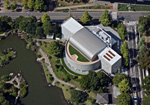 Toshiharu Kitajima, courtesy of Maki and Associates The Japanese Sword Museum, Tokyo, 2018 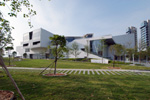 Maki and Associates Shenzhen Sea World Culture and Arts Center, 2017  Shinkenchiku-sha, courtesy of Maki and Associates Aga Kahn Museum, Ontario, Canada, 2014 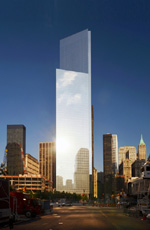 Tectonic, courtesy of Maki and Associates 4 World Trade Center, New York City, as seen when completed in 2013 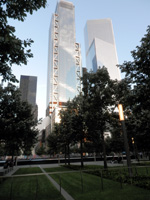 Kristen Richards 4 World Trade Center, right, with Rogers Stirk Harbour + Partners’ 80-story 3 World Trade Center, left, as viewed from the 9/11 Memorial, September 2017 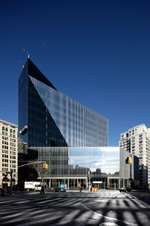 Maki and Associates 51 Astor Place in New York City, 2013 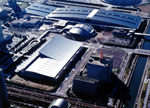 Toshiharu Kitajima, courtesy of Maki and Associates Makuhari Convention Center, Chiba, Japan, 1989, 1998 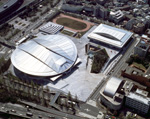 Toshiharu Kitajima, courtesy of Maki and Associates Tokyo Metropolitan Gymnasium, 1990 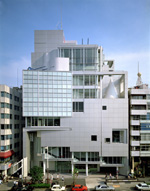 Toshiharu Kitajima, courtesy of Maki and Associates Spiral Art Center, Minato-ku,Tokyo, 1985 |
© 2018 ArchNewsNow.com